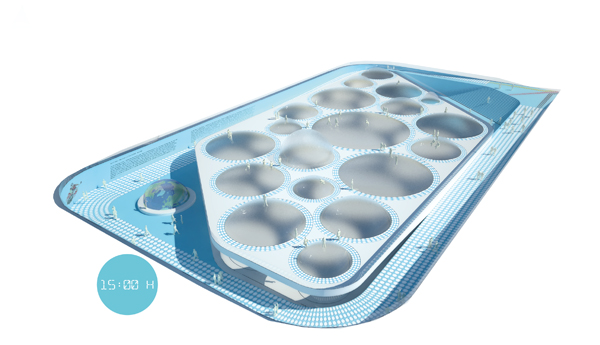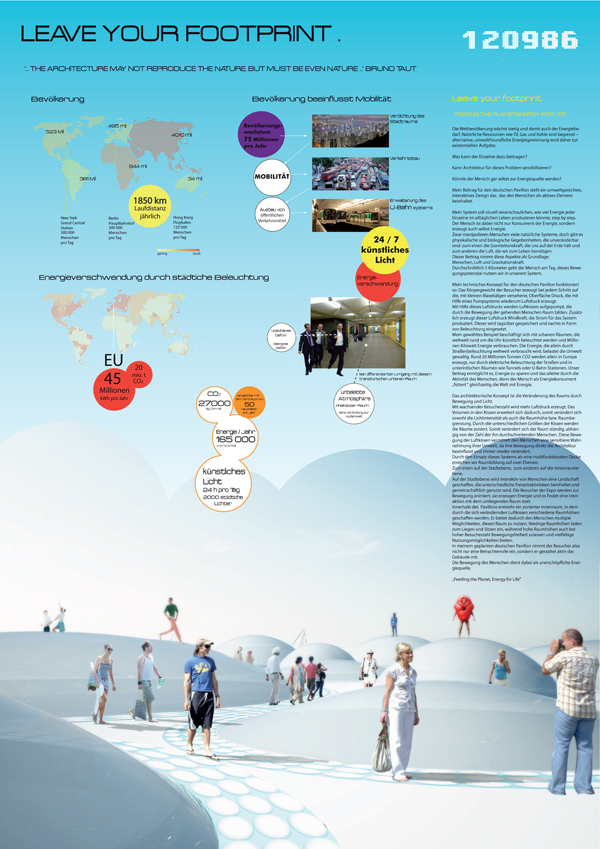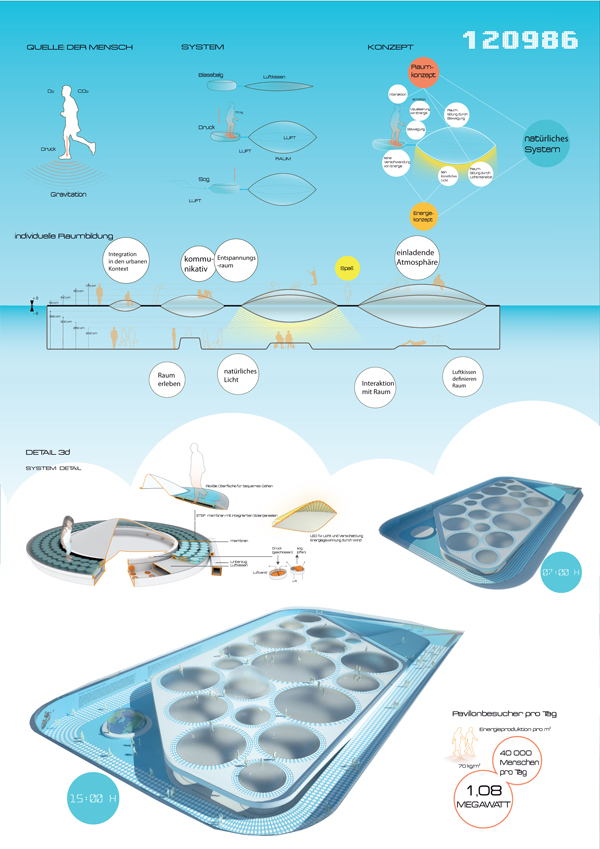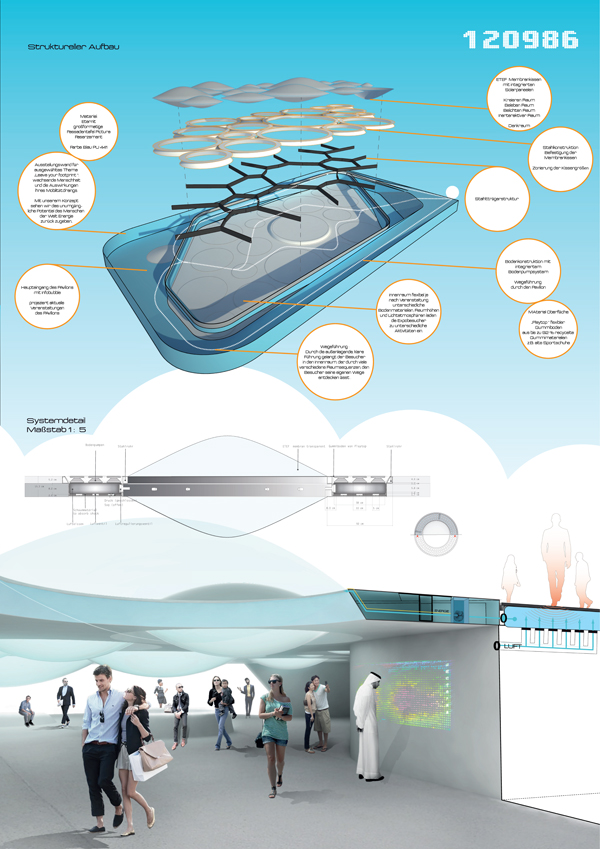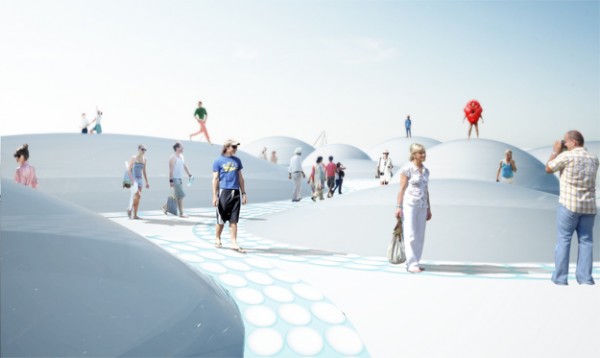This proposal for the German pavilion at the 2015 EXPO designed by Eva Hagen and Hajdin Dragusha at the University of Applied Sciences in Germany demosntrates visually how much energy each individual could produce. Mankind interacts with natural systems, but we cannot and should not change certain things like the need for breathing and gravitational forces.
The proposed system “functions” with people, air, and gravity. Everybody walks an average of 5km a day, this energy is added to the system. The body mass creates pressure step by step and could be transformed into air pressure that can be used to inflate a cushion-like structure – the steps of a person generate space, air pressure, and energy. The produced energy could be stored during day time and used as lighting at night.
The mobility behavior plays an important role in the system. As the wrold’s population increases rapidly; we should focus on technologies, which preserve natural resources like trains or other public transportation systems. Most of these systems operate underground. What we really need are attractive, user-friendly, eco-friendly and safe underground scenarios. Energy and light are the most important characteristics for this type of architecture. Walking people produce energy and a new architecture concept is created: “modify space through movement and light. This proposal for the German pavilion is an environmentally responsible, performance design based on the human scale – moving people is a never ending energy source.

